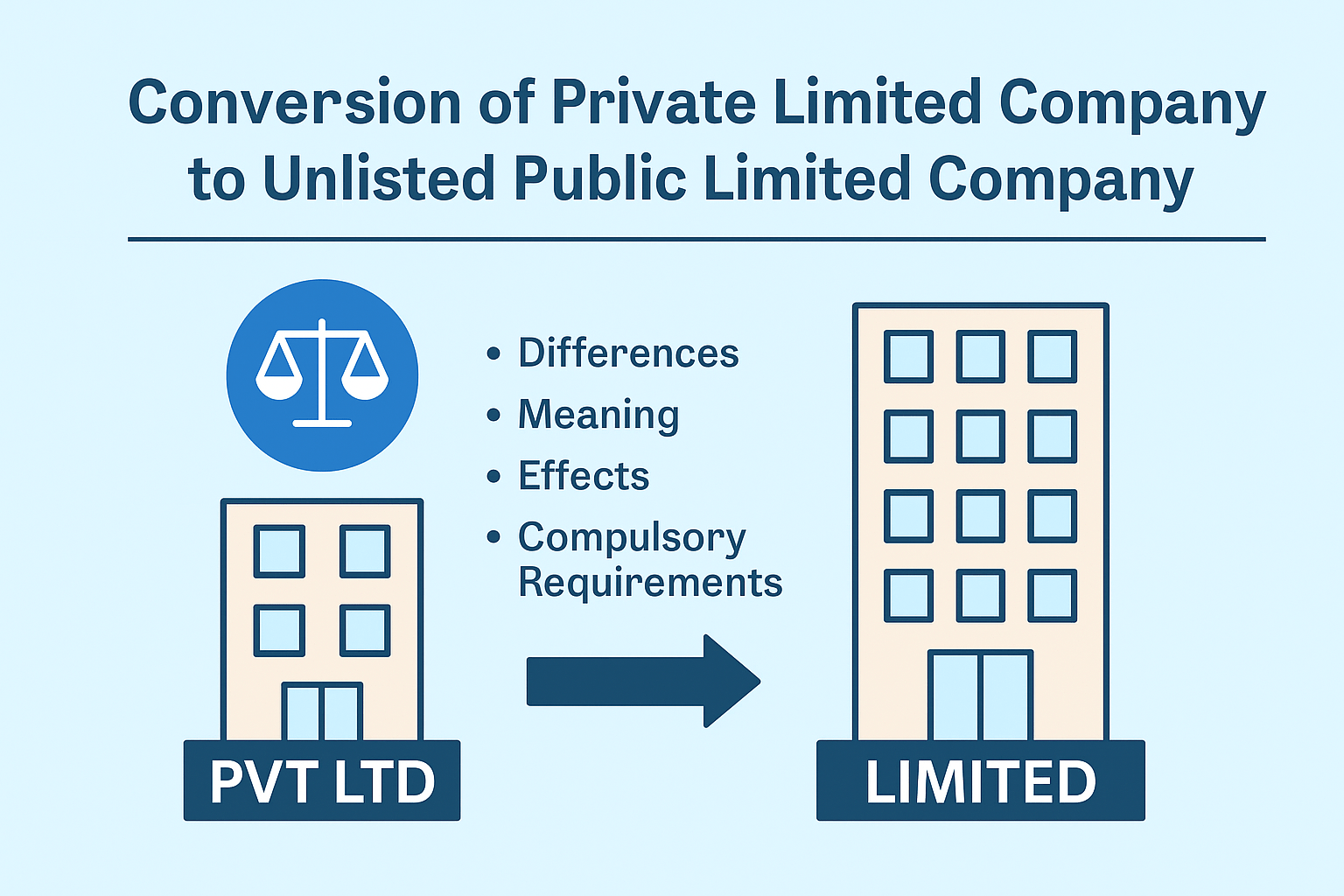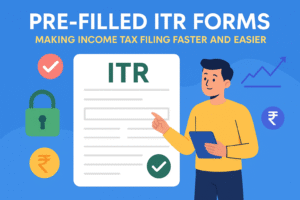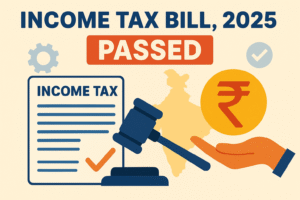Businesses evolve over time, and so do their structures. A Private Limited Company may eventually outgrow its limitations and seek to convert into a Public Limited Company, even if it chooses to remain unlisted. This strategic move can unlock broader investment opportunities, support future scalability, and enhance credibility.
In this blog, we’ll dive deep into the conversion of a Private Limited Company to an Unlisted Public Limited Company in India – explaining its meaning, differences, effects, compulsory requirements, procedures, and post-conversion implications.
—
1. Meaning: What is Conversion of Private Company to Unlisted Public Company?
A Private Limited Company (Pvt Ltd) is a closely-held business entity that restricts share transfers and limits its number of shareholders. In contrast, a Public Limited Company (Ltd) can offer its shares to the public and has fewer restrictions.
However, not all public limited companies are listed on stock exchanges. An Unlisted Public Company is one that has converted into a public limited company but does not list its shares on any stock exchange.
Conversion refers to a structural transformation where a private company complies with the requirements and formally alters its status to a public company under the Companies Act, 2013.
—
2. Effects of Conversion
Once converted, the company becomes a public limited company in the eyes of the law. Here are the effects:
- Name Change: The suffix changes from “Private Limited” to “Limited.”
- Increase in Statutory Compliance: Higher filing, audit, and disclosure obligations.
- No Automatic Listing: The company does not become listed unless it voluntarily files for an IPO.
- Wider Capital Raising Options: Eligible to raise capital from the public via private placements or public issues (if registered).
- Share Transferability: Shares become freely transferable among shareholders.
—
3. Compulsory Requirements for Conversion
Under Section 14 and Section 18 of the Companies Act, 2013, the following requirements must be fulfilled:
A. Basic Eligibility Conditions
- Minimum 7 shareholders.
- Minimum 3 directors.
- Alteration of Articles of Association (AOA) to remove private company restrictions.
- Alteration of Memorandum of Association (MOA) to reflect public company status.
B. Legal and Regulatory Requirements
1. Hold Board Meeting
- To propose conversion and approve changes to MOA & AOA.
- Fix date for Extra Ordinary General Meeting (EGM).
2. Pass Special Resolution in EGM
- 3/4th majority approval required.
- Approve name change and conversion-related changes in MOA/AOA.
3. File Forms with ROC
- MGT-14: Within 30 days of passing the special resolution.
- INC-27: For conversion, along with requisite attachments.
4. Amend PAN, TAN, and Bank Records
- Reflect new company name and structure.
5. Update statutory registers & signboards
—
4. Detailed Procedure for Conversion
Step 1: Board Meeting
- Call and hold a Board Meeting.
- Approve the draft notice of EGM.
- Approve changes to MOA & AOA.
Step 2: Extraordinary General Meeting
- Serve notice with explanatory statement (21 days prior).
- Hold EGM and pass a Special Resolution.
Step 3: Filing with ROC
File Form MGT-14 with:
- Certified copies of Special Resolution
- Amended MOA & AOA
File Form INC-27 with:
- Board and Shareholder Resolutions
- Altered AOA/MOA
- List of members and directors
- Affidavit from Directors (if required)
- NOC from lenders (if applicable)
Step 4: Certificate of Incorporation
- ROC issues Fresh Certificate of Incorporation (COI).
- The company is now a Public Limited Company.
—
5. Post-Conversion Compliances
- Update name with PAN/TAN, bank accounts, licenses, GST, etc.
- Update letterheads, seals, and signage.
- Maintain new statutory registers under the Companies Act.
- File Annual Returns as a public company (MGT-7, AOC-4).
- Appoint Internal Auditor and ensure Secretarial Audit if applicable.
- Comply with deposit rules under Companies (Acceptance of Deposits) Rules, 2014.
—
6. Advantages of Conversion
- Enhanced Credibility: Public companies have higher trust in the market.
- Attract Larger Investors: Eligible to approach venture capitalists or PE firms.
- Scalability: Easier to expand business with wider investor participation.
- Eventual Listing Ready: Can list shares if needed in the future.
—
7. Cautions & Limitations
- Increased regulatory scrutiny.
- Greater transparency and reporting standards.
- Must comply with Section 73-76 of the Companies Act for accepting deposits.
- Not suitable for small companies without scalable operations or investor interest.
—
Conclusion
Conversion from a Private Limited to an Unlisted Public Limited Company is a strategic move for businesses looking to scale up, attract funding, and prepare for a more structured governance framework. However, it comes with additional responsibilities and compliances. With proper planning and legal guidance, this transition can significantly benefit a growth-oriented company.
—
Need Help with Conversion?
We assist businesses in end-to-end Company Structure conversions, ROC Filings, and compliance support.
Get in touch with our experts today!
—






